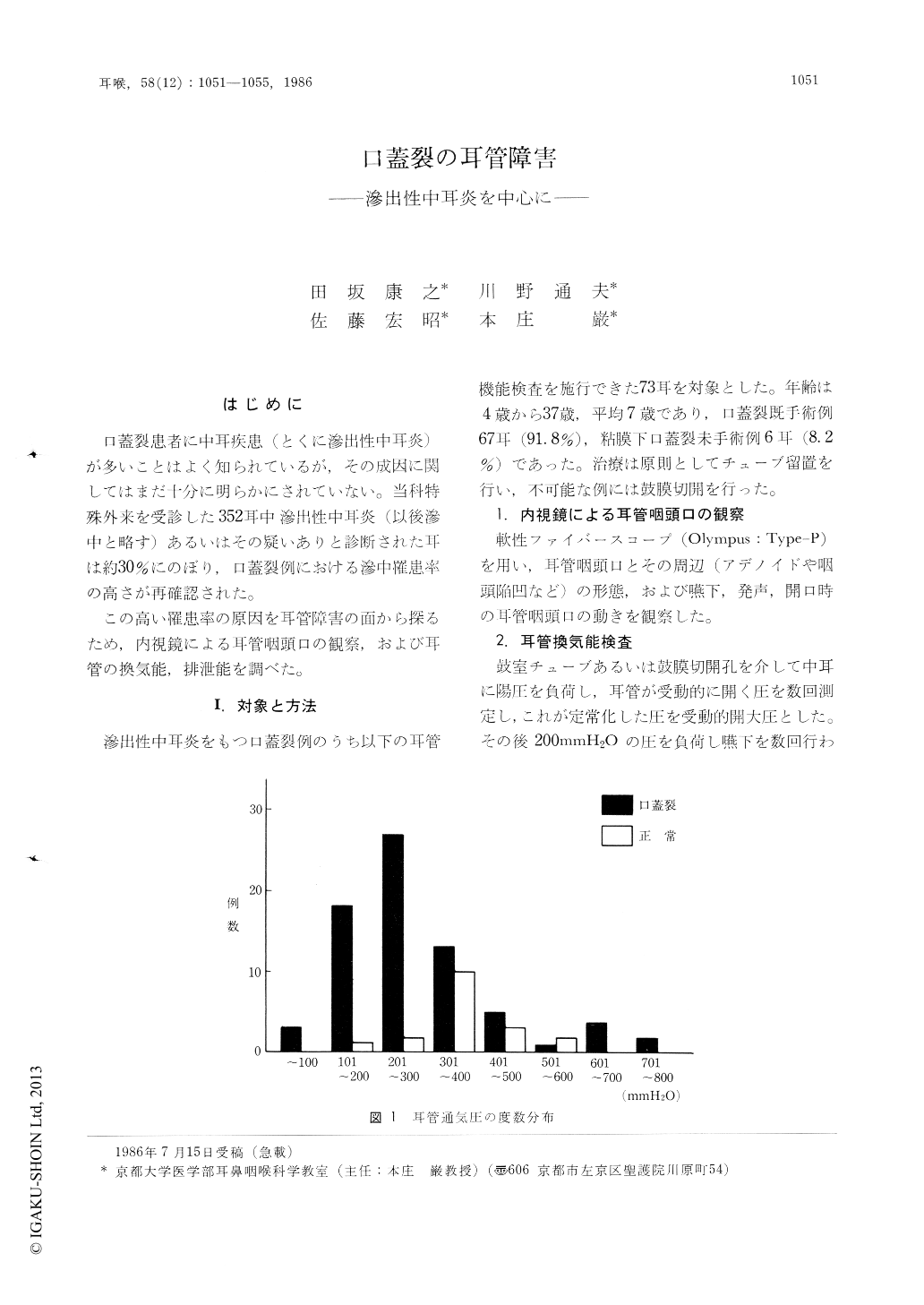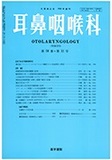Japanese
English
- 有料閲覧
- Abstract 文献概要
- 1ページ目 Look Inside
はじめに
口蓋裂患者に中耳疾患、(とくに滲出性中耳炎)が多いことはよく知られているが,その成因に関してはまだ十分に明らかにされていない。当科特殊外来を受診した352耳中滲出性中耳炎(以後滲中と略す)あるいはその疑いありと診断された耳は約30%にのぼり,口蓋裂例における滲中罹患率の高さが再確認された。
この高い罹患率の原因を耳管障害の面から探るため,内視鏡による耳管咽頭口の観察,および耳管の換気能,排泄能を調べた。
Eustachian tube function of cleft palate patients (73 ears) was examined by inflation-deflation test, clearance function test, and endoscopy of the pharyngeal orifice of the tube. Characteristic findings were as follows ;
1. Abnormal movement around the pharyngealorifice of the tube both during swallowing and phonation were observed. Ninety four per cent of the tested ears showed no dilation of the orifice, indicating either hypofunction of the tensor muscle or abnormal pathway of the levator muscle.
2. Averaged opening pressure of the tube was 280±160mmH2O in cleft palate patients, which was significantly lower than those without cleft palate.
3. Sixty one per cent of the tested ears equilibrated applied positive middle ear pressure during swallowing, but 32% of the ears equilibrated itduring phonation. Thus the active tubal opening appeared to be performed not only by the tensor muscle.
4. Almost all ears could not equilibrate negative middle ear pressure, indicating fragile structure of the eustachian tube.
5. Ciliary function of the tube in cleft palate patients was generally good.
Both anatomical abnormality of the muscles related to the eustachian tube and fragile structure of the tube were estimated to be the main causes of the OME in the cleft palate population.

Copyright © 1986, Igaku-Shoin Ltd. All rights reserved.


